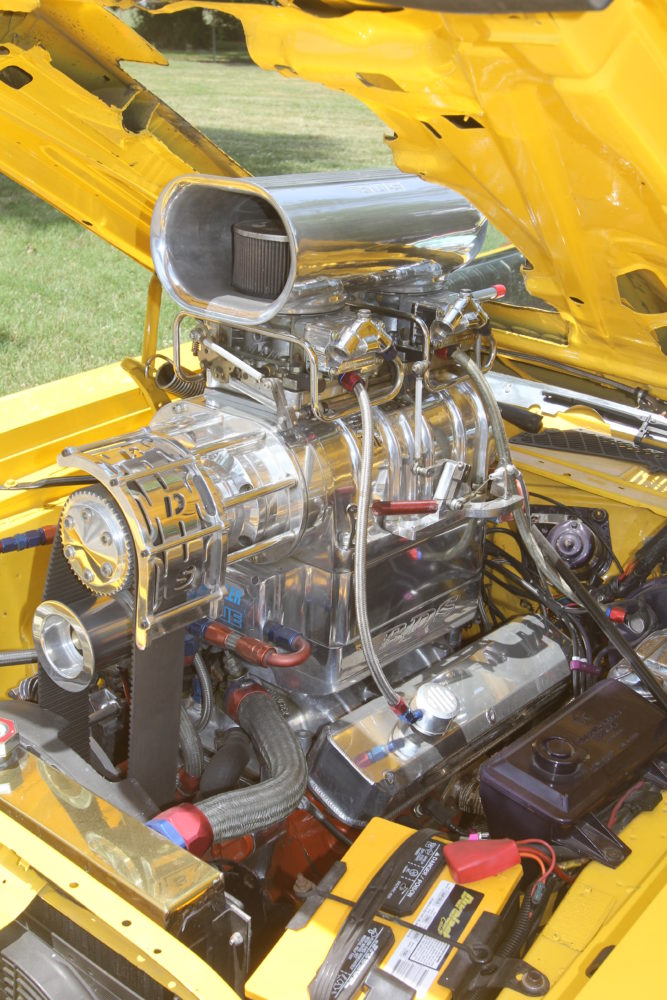I was watching a dyno test video the other day with a couple of cam swaps on a supercharged LS3. On the first test, a slightly bigger cam showed more power with the same boost. On the last cam—and the biggest one—the power went up again but the boost went down. Shouldn’t the power go up with more boost and drop with less boost? It seems like something wasn’t right with that test.
S.I.

This is an excellent question, and kudos to you for paying attention to the details.
As usual, the simple answer isn’t exactly simple, but we’ll try to keep this brief.
First, let’s address what boost really represents. Most superchargers are not actual air compressors—the main exception is the screw-type positive-displacement superchargers like the Whipple and Kenne-Bell. All others, including the Roots blower and centrifugals, are air movers. They displace more air than the engine can ingest—so the air stacks up in the intake manifold, creating pressure that is referred to as boost. This is expressed in pounds per square inch (psi).
This pressure in the intake manifold is really an indication of a restriction to flow. Even with a true air compressor, if the engine used more air than the compressor can move, there would be no pressure. Most large superchargers can move enough air even at low speeds to create almost instant boost. This means the supercharger is moving more air than the engine can use, creating pressure in the intake manifold. That continues all the way up the rpm curve to peak power.
As the engine speed climbs, the airflow increases through the engine even though it’s not using that air as efficiently as it could. Much of the air is lost to valve overlap.
You mentioned that the test changed from the baseline to a slightly longer duration camshaft and the boost held steady as the power increased. This happened because the added duration kept the valves open longer at higher engine speeds which then allowed the pressure to push more air into the cylinders. Remember, at 6,000 rpm there is half as much time to fill the cylinders as there is a 3,000 rpm. So boost remained the same because there was still a sufficient restriction.
The final test installed a much longer duration cam and the boost dropped because now the valves were open long enough that the engine could use more of the air moved by the supercharger. The boost dropped as the power increased.
The power jumped because the cam allowed more air into the cylinders at high engine speeds by keeping the valves open longer. It’s entirely possible that at much lower engine speeds, this longer cam sacrificed power because the valves were open too long against an ideal duration for that lower speed. Essentially, the longer valve duration idealized the power for a higher engine speed. In most cases, the peak torque rpm point would also have been slightly higher.
What’s really happening here is the restriction presented by the smaller cams changed with the big cam.
In this case, reducing the restriction to airflow caused the boost to drop slightly. Essentially, airflow increased despite the reduced amount of pressure pushing the air into the cylinders.
Another way this same situation can arise—one of more power with less boost—is by changing to larger intake ports. This has the same effect of reducing the restrictions to air flow, allowing more air into the cylinders. This is exactly the same effect as with normally aspirated engines. By reducing the restrictions to flow at high rpm, we can move more air which helps the engine make more power.
As an aside, the concept of more boost to make more power does work—up to a point. As a supercharger moves air, it’s also heating the air. As the supercharger spins faster, it eventually reaches a point where it’s heating up the air so much, it can start to work against itself.
As the air exiting the supercharger gets hotter, it becomes less dense. So even though it still has high boost or high pressure—the ultimate effect is that the power drops off because the air is hotter and less dense. Power falls off.
The common reference that an engine is nothing more than an air pump is illustrated here. Move more air through the engine (and capture it properly in the cylinders), and you’ll make more power.

[…] Ask Away! with Jeff Smith: Here’s Why More Engine Boost Doesn’t Always Mean More Power […]
Not to be a nitpicky asshole, but a centrifugal supercharger is indeed a compressor, albeit a different type than a screw compressor. Law of conservation of energy requires that pressure increase as air velocity decreases as it travels through the widening volute and exits the housing, therefore the air is compressed. The only true air mover is a roots.